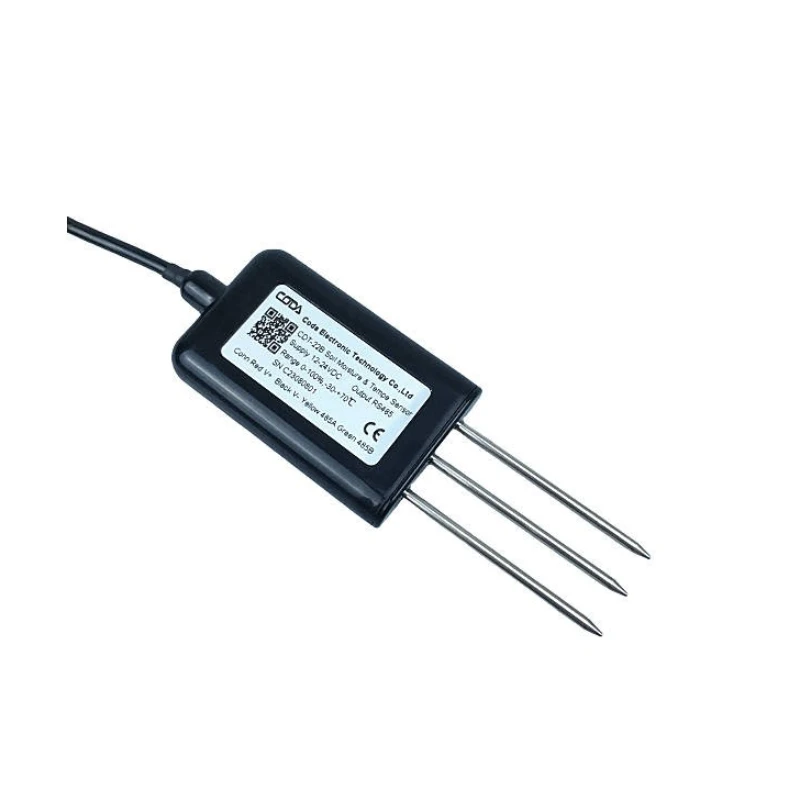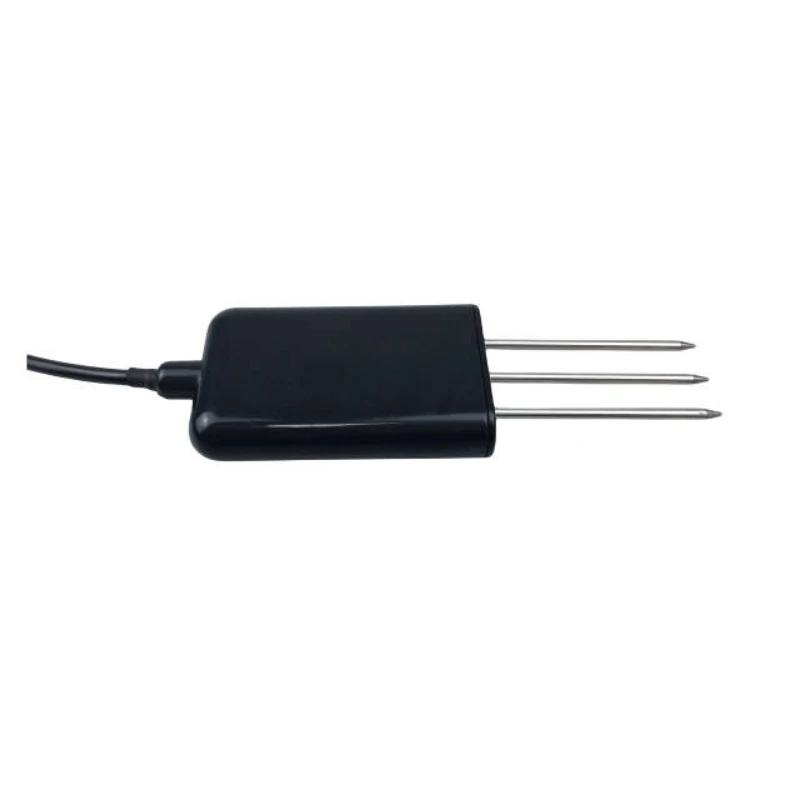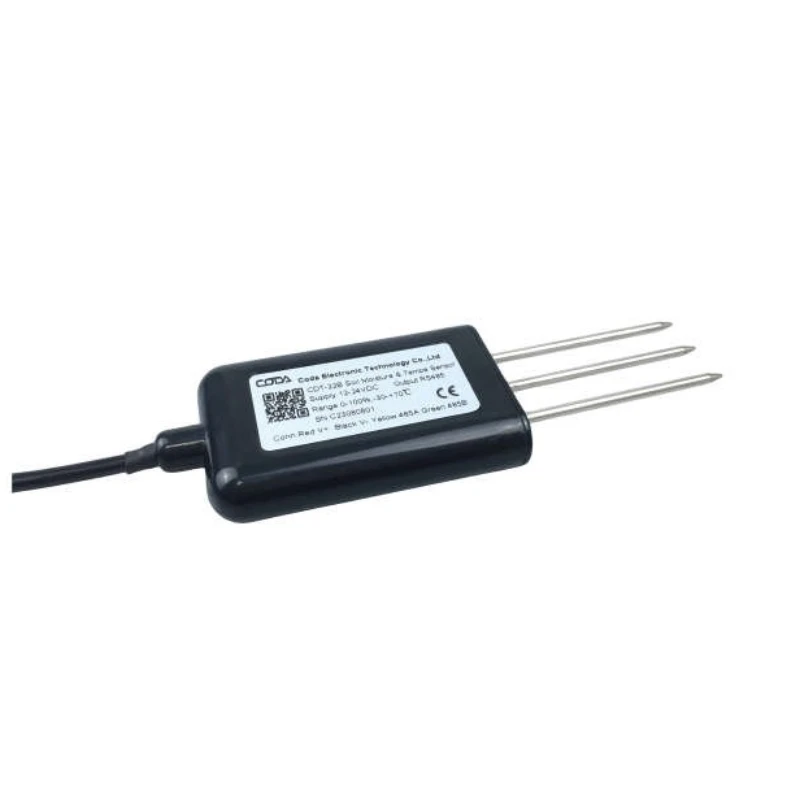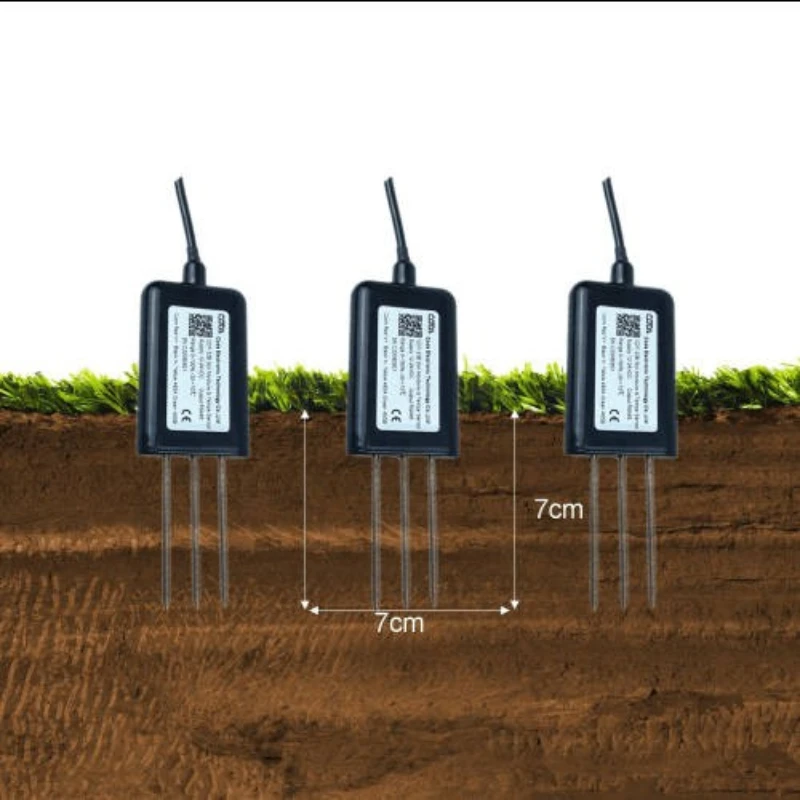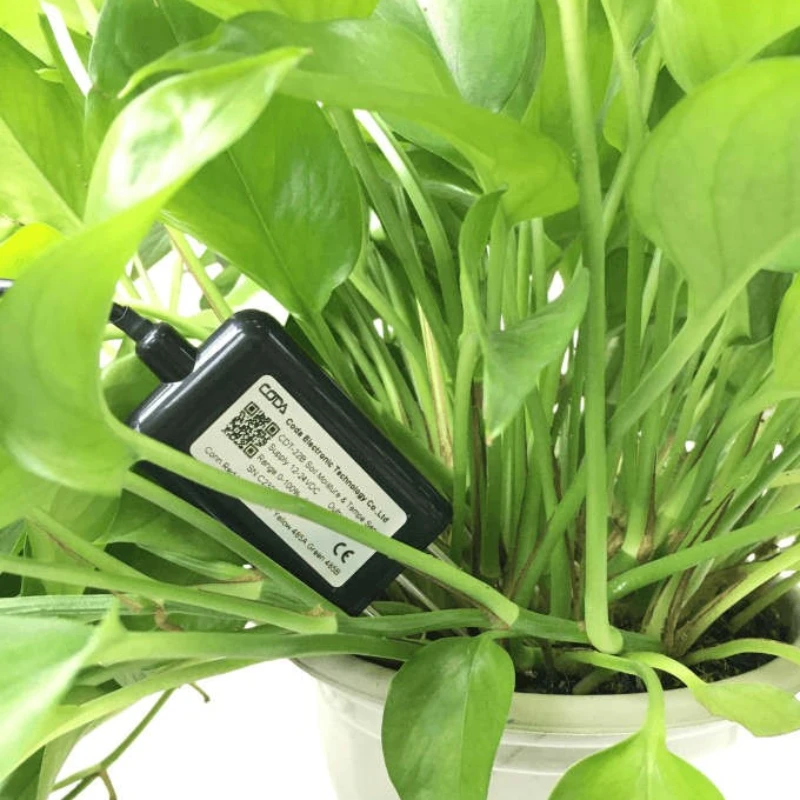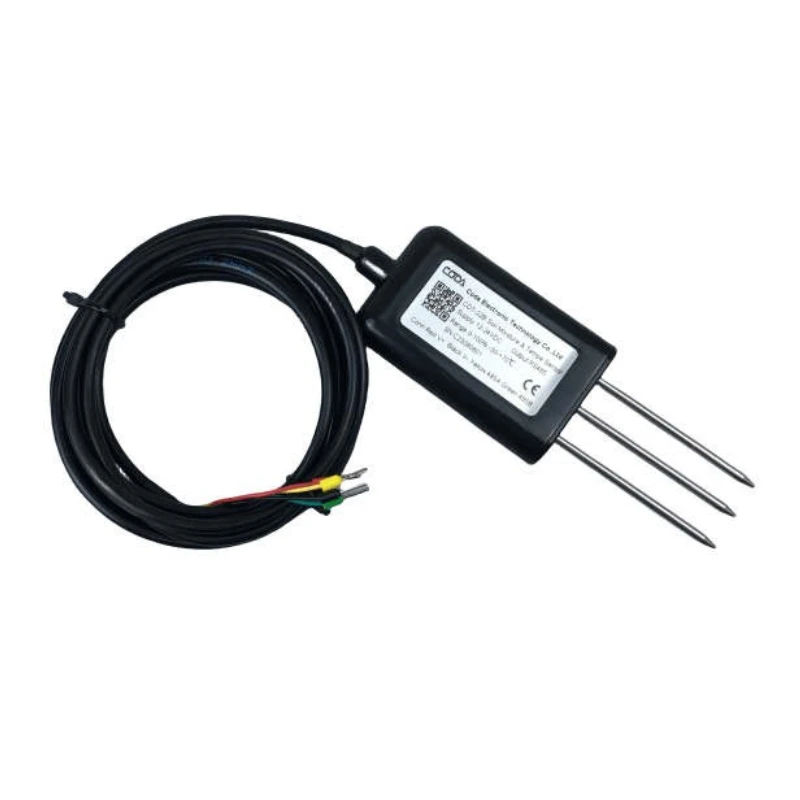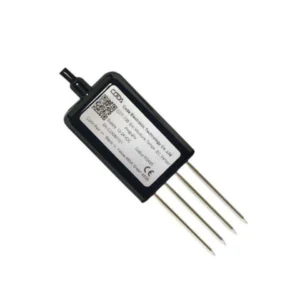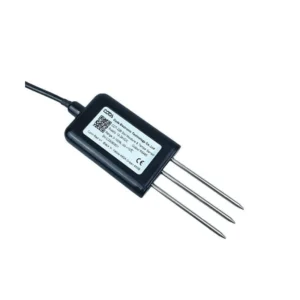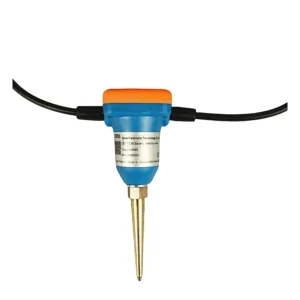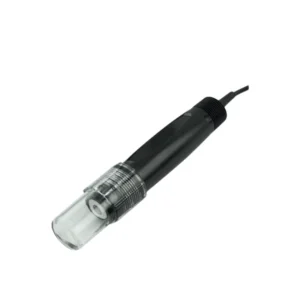Description
CDT-22B Soil Moisture & Temperature Sensor
CDT-22B Soil Moisture & Temperature Sensor to integrate the moisture and temperature measurement. The stainless steel probe is inserted into soil surface or soil profile to test soil moisture and temperature quickly.
Moisture measurement part is designed on the basis of the principle of FDR, by measuring the dielectric constant of the soil in order to measure the volume of the soil moisture content, temperature part adopts precision platinum resistance element, the product built-in drift calibration and temperature compensation circuit, can adapt to most applications. The probe can be permanently embedded underground and be connected to a data logger for unlimited testing.
Dimnsion & Mounting
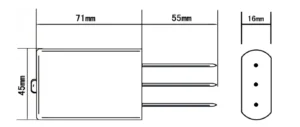
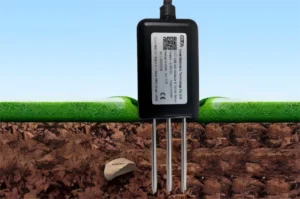
Soil Moisture & Temperature details show
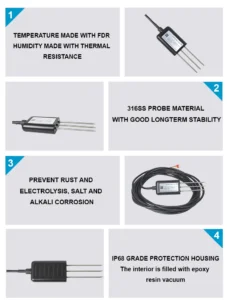
Application
Agriculture:
◉In modern agriculture, soil temperature and humidity sensors are the key equipment to achieve precise irrigation. By monitoring soil moisture in real time, farmers can get an accurate picture of how much water is in the soil.
For example, in wheat fields, an irrigation system can turn on when the soil moisture sensor shows low moisture. Moisture levels can affect wheat growth. The best range for wheat is usually between 60 and 70 percent of the field’s water capacity. When moisture is below this range, it can cause problems.
◉Drought and flood are the two major disasters facing agricultural production. Soil temperature and humidity sensors can help farmers prepare early. They serve as warning tools for acting in advance.
Before a drought starts, the sensor checks the soil moisture. If it drops below a certain level, like 30% field capacity for a week, it can send a drought warning.
This helps remind farmers to take action. They can use drought-resistant crops and water-saving irrigation methods.
Environmental monitoring:
◉Researchers can use soil temperature and humidity sensors to study soil water balance. We can place sensors in different locations in an ecological area. This will help us track water inputs, such as rainfall and irrigation, as well as water outputs. evaporation, plant transpiration at different levels of the soil.
In a land ecosystem near a wetland, sensor data can help study how soil water moves. It can show how water exchanges between the wetland and nearby soil. It also tracks changes in soil water levels below the surface.
◉Water from the soil will recharge the groundwater through osmosis. Soil temperature and humidity sensors can track moisture changes in different soil layers. This helps gather data for groundwater recharge studies.
Sensor News
Smart Agriculture Industy Solution
How does soil moisture sensor work?
Soil Moisture Sensor Price | Coda Weather Sensor
